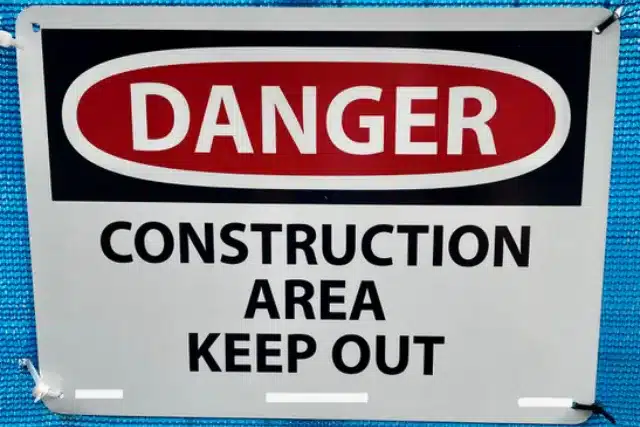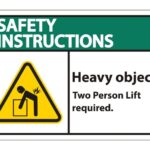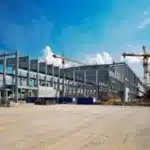Enhancing Workplace Safety Through Effective Safety Signage
Safety signage refers to visual cues, symbols, and written messages safeguarding individuals in various environments, from workplaces to public spaces. These signs provide clear and concise instructions, warnings, and information about potential hazards, ensuring that individuals are aware of their surroundings and can take appropriate precautions. By prominently displaying safety signage, organizations demonstrate their commitment to prioritizing the well-being of their employees, customers, and visitors. Moreover, safety signage helps mitigate risks, prevent accidents, and save lives. It is a constant reminder of safety protocols and procedures, fostering a culture of awareness and accountability. Effective safety signage promotes a safe and healthy environment for all, from construction sites to manufacturing plants, airports, and mining sites. These are five ways safety signage can improve workplace safety at your facility:
1. Enhancing Hazard Awareness and Communication
Safety signage serves as a visual reminder of potential dangers, helping workers remain vigilant and alert to workplace hazards such as electrical hazards, chemical hazards, falls, heavy machinery, falling objects, or slippery surfaces. Bold colors, clear symbols, and concise messages instantly convey vital information to workers, visitors, and passersby. Safety signs are indispensable tools for enhancing awareness and communication on job sites, whether indicating the location of emergency exits, warning against hazardous areas, or reminding workers to wear personal protective equipment (PPE).
2. Mitigating Risks and Preventing Accidents
Some work environments, including construction and mining sites, are rife with potential dangers, from moving machinery and falling debris to hazardous materials and unstable terrain. Safety signage acts as a first line of defense against these risks, alerting individuals to potential hazards and prompting them to take precautionary measures. By prominently displaying warning signs and safety instructions, job sites empower workers to make informed decisions and avoid accidents that could result in injury or even loss of life.
3. Cultivating a Culture of Safety
Beyond mere compliance with regulatory requirements, safety signage is pivotal in nurturing a culture of safety within organizations. When safety messages are prominently displayed and consistently reinforced, they become ingrained in workers’ collective consciousness, influencing behavior and attitudes toward safety. Investing in effective safety signage is a simple, cost-effective way to create a positive work environment. By fostering a culture where safety is valued and prioritized, job sites can significantly reduce the frequency and severity of accidents, creating a safer and more conducive working environment for everyone involved.
4. Legal Compliance and Liability Reduction
In addition to its practical benefits, adherence to safety signage regulations is a legal imperative. Regulatory bodies mandate specific safety signs to mitigate risks and ensure compliance with occupational health and safety standards. Rules establishing the requirements for the design, application, and use of safety signage include color, size, placement, and viewing distance. Employers are responsible for regularly inspecting and maintaining safety signs to ensure they remain visible, legible, and effective in conveying safety messages. Signs must be positioned where hazards are present, and employees can easily see them. Failure to implement adequate safety signage exposes organizations to potential fines and penalties and increases their liability in the event of accidents or injuries on-site. Safety signs must be easily understood no matter what language is spoken. By proactively addressing safety signage requirements, companies demonstrate their commitment to safeguarding the well-being of their workforce and minimizing legal risks.
5. Facilitating Emergency Response and Rescue Operations
In high-risk industries such as construction, mining, and manufacturing, emergencies can occur suddenly and without warning. Clear and concise safety signage can make a crucial difference in facilitating emergency response and rescue operations during crises. From guiding evacuation routes to identifying emergency exits, first aid stations, fire extinguishers, and assembly points, well-placed signs ensure that individuals can navigate the site swiftly and safely during times of crisis. Effective safety signage helps minimize confusion and ensures a prompt and orderly response in case of emergencies such as fires, chemical spills, or structural collapse. By enabling efficient coordination and communication, safety signage enhances the effectiveness of emergency procedures and minimizes the potential for chaos.
Safety signage plays an indispensable role in maintaining a safe environment. It works with other safety measures to create a comprehensive safety strategy. Safety signs provide immediate visual cues that alert individuals to potential hazards, guiding them on the necessary precautions. Whether it’s indicating the presence of heavy machinery, highlighting emergency exits, or warning about slippery surfaces, these signs ensure that vital safety information is always accessible. Their visibility and clarity are critical factors in their effectiveness, making them a reliable source of guidance in routine operations and emergencies. These signs reinforce behavior and compliance with safety regulations. They remind us that safety is a priority, helping foster an environment where individuals are more likely to adhere to safe practices.
In conjunction with other safety communication tools, such as safety manuals and training programs, safety signage enhances the overall safety framework. Each element of this framework supports the others, creating a system that protects individuals from harm. Safety signs, with their ability to provide instant, clear, and actionable information, are a vital piece of this puzzle, ensuring that safety information is communicated effectively at all times. By working alongside other safety tools and measures, safety signs help maintain a safe environment, promote a safety culture, and ensure critical information is always within reach.
By investing in comprehensive safety signage and prioritizing safety as a core value, organizations can create environments where workers feel empowered, protected, and valued. For expert guidance on safety signage or any other safety consulting issue, contact Safety Consulting Specialists at 919-417-2139. We have decades of experience and can assist you with comprehensive site safety audits, safety program development or evaluation, or customized safety training.


